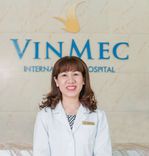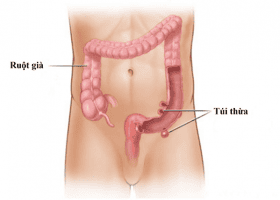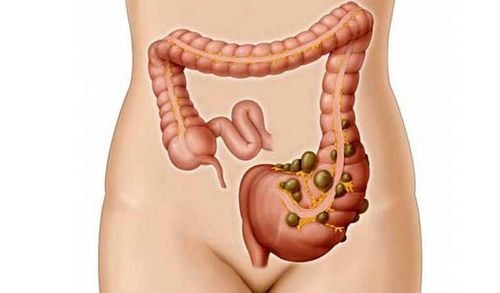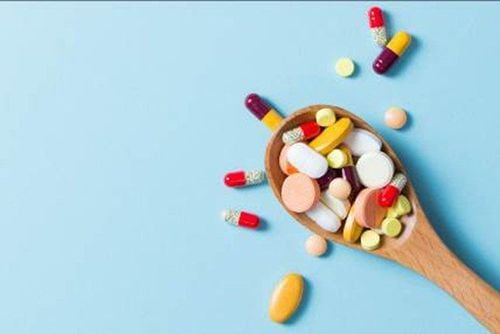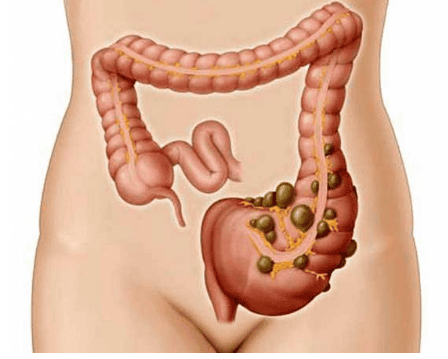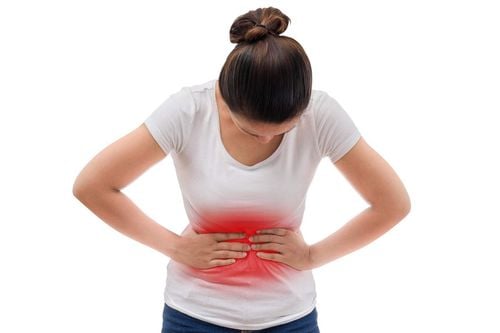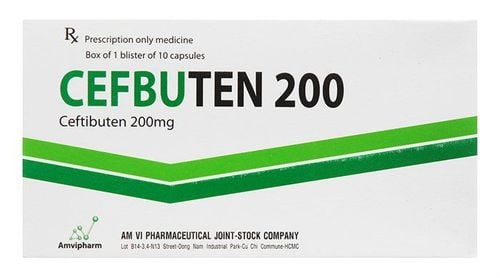This is an automatically translated article.
The article is professionally consulted by Doctor Vo Thi Thuy Trang - Gastrointestinal Endoscopy - Department of Medical Examination & Internal Medicine - Vinmec Da Nang International Hospital. Doctor has nearly 20 years of experience in the field of gastroenterology - Hepatobiliary tract.Diverticulitis of the colon is a common disease with unclear symptoms. The disease can lead to many unpredictable complications such as peritonitis, hemorrhage, perforated diverticulum, leak of nearby organs,... Therefore, patients need to detect and treat the disease early and effectively to avoid dangerous complications occur.
1. What is diverticulitis?
1.1 What is a colonic diverticulum? The colon (large intestine) is the final part of the digestive tract, which absorbs water and vitamins and converts digested food into stool. When going to the end of the colon, stool will be expelled through the anusNormally, the colon wall has 4 regular layers, no position is deeply indented. If there is a deep recess into the colon wall, it is a colonic diverticulum. The majority of diverticula of the gastrointestinal tract occur in the colon, of which 95% are in the sigmoid colon and 5% in the cecum.
When stools are small because of lack of fiber, stools will be hard and difficult to excrete. To expel stool, the colon will have to contract more, increasing pressure in the colon. The wall of the colon is sometimes uneven in structure, there are places where the wall is weak compared to the surrounding part. When colonic pressure increases, the mucosa of those weak spots will be pushed out through the intestinal wall, forming a small pouch, usually 1-2cm in size, sometimes 5-6cm large. Because of these balloon-like aneurysms, the sigmoid colon often becomes thickened and narrowed. This changes the function of the colon, easily causing abdominal pain, diarrhea or constipation.
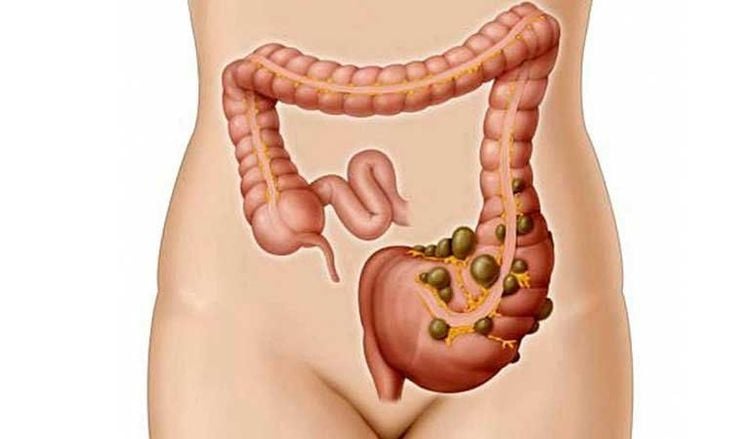
Diverticulitis occurs when one or more diverticula of the colon become inflamed or infected, presenting with redness and swelling. Diverticulitis can be mild or it can be a serious infection.
The cause of diverticulitis is still unknown. But doctors have listed a number of factors that increase the risk of disease such as: advanced age (over 40 years old), a low-fiber diet, physical inactivity, obesity, smoking, ..
.
2. Symptoms of colonic diverticulitis
The majority of patients with colonic diverticulum have no clinical symptoms. A few have symptoms of abdominal pain (usually in the lower left abdomen), accompanied by a feeling of abdominal distension, bloating, bowel disorders (usually constipation, sometimes loose or bloody stools).When the diverticulum becomes inflamed, patients often experience the following symptoms:
Sudden pain in the lower left abdomen, abdominal pain may be mild at first and worsen over several days; Change in bowel habits, often loose stools or constipation; Loss of appetite, nausea and vomiting; Fever, even high fever, chills; Distention, flatulence; Bleeding from the rectum (uncommon); Burning pain when urinating; Abnormal discharge. In mild cases of diverticulitis, the person may not experience any symptoms. In the case of severe diverticulitis, the patient may present with symptoms such as severe abdominal pain and fever above 38°C.
3. Complications of colonic diverticulitis
The diverticulum is similar in structure to the colonic wall, but thinner. The diverticulum may be located within the colon wall or protrude into the colonic peritoneum. At that time, the muscular layer of the diverticulum is very thin or absent, and is prone to rupture or perforation. In addition, when the diverticulum is infected (diverticulitis) can cause many dangerous complications such as:Peritonitis: Occurs when the diverticulum is severely infected or the diverticulum is perforated, causing digestive juices or stools in the intestines fall into the abdominal cavity. This condition causes severe inflammation of the lining of the abdominal cavity (peritoneum). If not timely emergency, the patient may die; Rectal bleeding; Blockage in the large or small intestine due to scarring; Accumulation of pus in the diverticulum causes an abscess; Fistula of nearby organs - abnormal connection between different parts of the colon, between the colon and the bladder and the vagina, or between the colon and the abdominal wall.
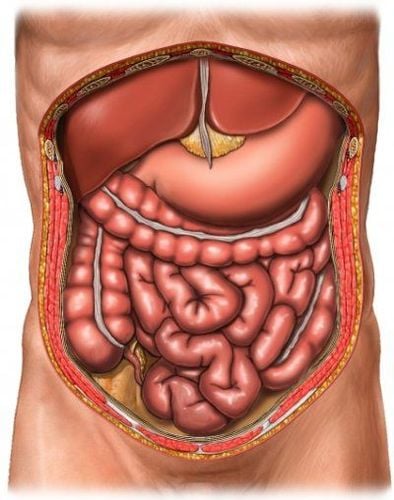
4. Diagnosing colonic diverticulitis
Based on the history and physical examination (detected pain in the left iliac fossa); Blood tests for white blood cell count - a sign of an infection; X-ray of the colon: Determine the extent of the disease; CT scan: Differentiate inflammatory or infected diverticulum; Flexible rectal endoscopy: View of the inside of the colon, providing additional information for diagnosis and treatment.5. Treatment of diverticulitis
Treatment of diverticulitis is mainly to treat infection, rest the colon and minimize complications. Specifically:5.1 With mild diverticulitis, without complications Outpatient treatment with antibiotics, analgesics and antispasmodics as prescribed by the doctor; Rest the colon by fasting or eating sparingly for several days, then eating liquid, high-fiber foods (whole grains, fruits, and vegetables) until the pain is gone. 5.2 With severe diverticulitis, frequently recur. complications of the disease; If there is no improvement after 3 days of antibiotics, enteritis, pus pocket, peritonitis, surgery to remove the colon with the inflamed diverticulum is necessary. There are 2 types of surgery: one-stage bowel resection and two-stage bowel resection + colostomy. With a single-stage bowel resection, the doctor cuts off the portion of the bowel that contains the diverticulum, and then reconnects the uninflamed segments of the large intestine, allowing normal bowel movements. Also, 2-stage enterectomy and colostomy are indicated for patients with severe colitis, the doctor could not connect the colon and rectum in the first surgery. During surgery, the doctor will open a hole in the abdominal wall, connect the large intestine into it to remove waste. After a few months, when the inflammation has healed, the doctor will perform a second surgery to reattach the cut intestine.
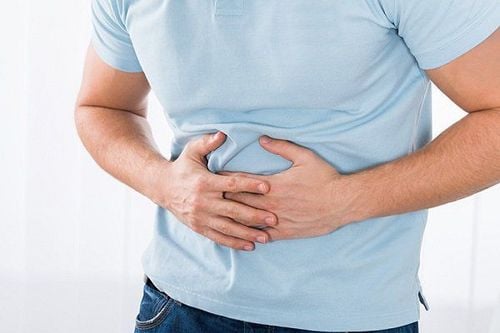
6. How to prevent diverticulitis
6.1 Eat a lot of fiber Include fresh fruits, vegetables and whole grains to soften stools, help stools be excreted quickly, reducing pressure in the digestive tract. At the same time, it is necessary to avoid foods with many seeds such as guava, sesame, strawberries, tomato seeds, ...;6.2 Drink plenty of water Fiber works by absorbing water and softening waste in the large intestine. If you don't drink enough water, fiber can cause constipation. Therefore, patients should drink plenty of water to avoid the risk of constipation;
6.3 Do not hold your urine Because this makes the stool dry, requires a lot of straining, increases colonic pressure;
6.4 Manage stress Stress causes increased colon spasms, leading to colonic diverticulum formation. Therefore, it is necessary to control and treat stress to prevent the risk of diverticulitis;
6.5 Regular exercise has the effect of promoting digestive function and reducing pressure inside the colon. Patients should exercise at least 30 minutes a day.
Diverticulitis of the colon can lead to many dangerous complications. Therefore, when there are symptoms of disease, patients should go to the doctor as soon as possible so that the disease can be diagnosed and treated promptly and effectively.
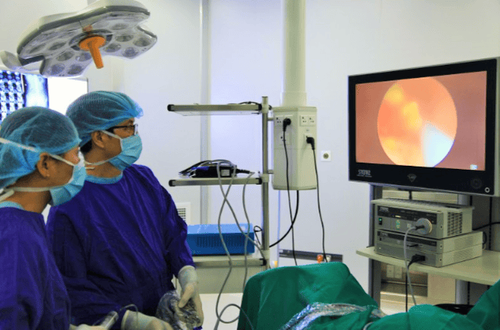
Examination and treatment by a team of highly qualified, experienced and wholehearted doctors and nurses. for the patient's health; Comprehensive and professional medical examination, consultation and treatment services; System of modern medical equipment of international standards. If you have a need for consultation and examination at Vinmec Hospitals under the national health system, please book an appointment on the website for service.
Please dial HOTLINE for more information or register for an appointment HERE. Download MyVinmec app to make appointments faster and to manage your bookings easily.
